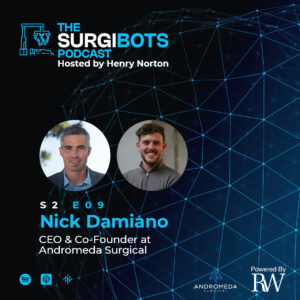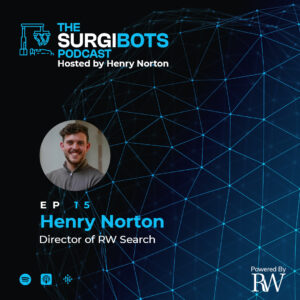Surgibots Podcast
S02 E09
Changing Perceptions of Autonomous Surgical Robotics
Autonomous surgical robotics are still a thing of the future. However, when I spoke to Nick Damiano, the CEO & Co-Founder at Andromeda Surgical, on Season 2 Episode 9 of The Surgibots Podcast, he explained how he’s bringing them closer than ever before.
Listen/watch now

Listen/watch now



